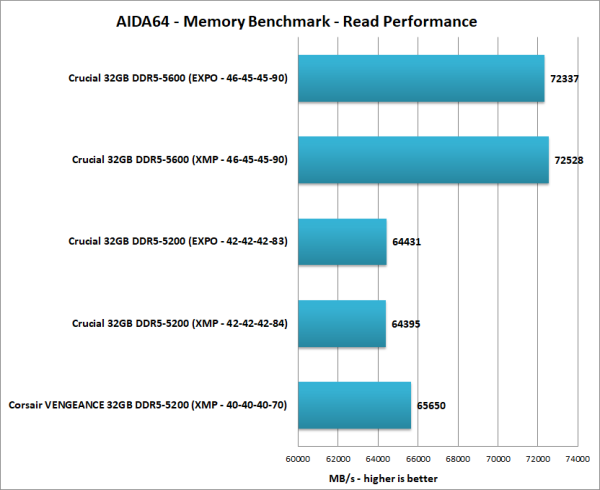The test system used in this review is equipped with an AMD Ryzen 9 7900x CPU, Gigabyte B650E AORUS master motherboard, 32GB (16GB x 2) of Corsair Vengeance 5200MT/s DDR5 memory, Samsung 990 Pro 2TB SSD and a GIGABYTE GeForce GTX 1060 WINDFORCE OC 6G graphics card. For the operating system, I used the latest version of Windows 11.
To test the performance of Crucial's DDR5-5200 and 5600 desktop memory, I ran a series of benchmarks using AIDA64 Extreme and PCMark 10. For comparison, I've also included test results from Corsair's VENGEANCE 32GB DDR5-5200 C40 memory kit.
AIDA64 Extreme 6.85.6300:
First, I ran a few quick tests using AIDA64. Among other things, this benchmark measures the read, write and copy speeds of your system's memory as well as the latency.




There were no real surprises here. As you'd expect, Crucial's DDR5-5600 memory was the top performer here, having the fastest read and write speeds as well as the best latency.
PCMark 10 Extended Benchmark:
The PCMark 10 Extended benchmark is a longer benchmark that covers a wider range of activities. It contains tests that cover the wide variety of work encountered in a modern office from everyday essentials and productivity applications to demanding work with digital media content. The benchmark also includes a gaming test that focuses on real-time graphics and physics.

Crucial's DDR5-5600 memory again took the top spot in this test. Oddly enough, both the 5200 and 5600 rated memory performed better when using the XMP profile, even though the test system is AMD based. Nevertheless, the difference in performance between the two profiles was less than 1%.

